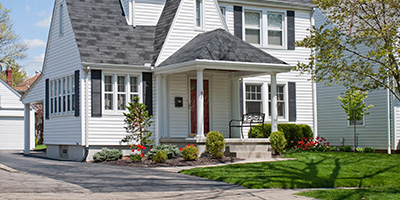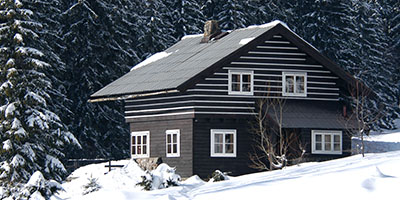The Ultimate Fall Home Maintenance Checklist

The Ultimate Fall Home Maintenance Checklist
Autumn is a great time of the year – falling leaves, football season, apple cider and pumpkin spice-everything. But before you get too cozy watching spooky movies, it’s important to make sure your house is as ready for the changing seasons as you are. Follow this fall maintenance checklist to prepare your home and yard for cooler temperatures.
13 Essential Fall Home Improvement and Cleaning Projects
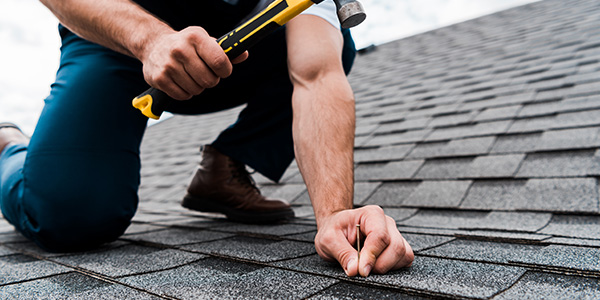
1. Repair or Replace Your Roof
This may go without saying, but winter is not the time to work on the roof so inspecting your shingles is an important fall home maintenance task. Beyond the slipping hazards ice and snow create, asphalt shingles need to be installed at temperatures between 40 and 85-degrees Fahrenheit. Otherwise, the shingles will become brittle and cold weather can prevent their adhesive from sticking to the roof. If you notice any missing or peeling areas on the roof, call in a professional for repairs and make a plan to get rid of the old shingles.
2. Inspect and Seal Your Deck
Another fall home improvement must-do is to perform safety checks on your deck. J.B. Sassano, president of Mr. Handyman, recommends “walking around the deck and sprinkling water on several different areas. If water soaks into the boards, it’s time to reseal the deck. If water forms a puddle or beads up, the deck is repelling water and will be safe for the winter.”
How to Protect Your Wood Deck From Colder Weather
- Check for loose nails and screws. Tighten or replace fasteners as needed.
- Power wash the deck on a day no colder than 40 degrees.
- Inspect for cracks or areas that are splintering. Fill cracks with an epoxy wood filler.
- Add a water-repelling stain to protect from melting ice and snow.

Fall Cleaning Pro Tip
In addition to checking your deck, autumn is the perfect time to clean up your patio furniture. Before storing or covering your deck décor for the winter, hose off the furniture and wash or spot clean any cushions, pillows, rugs and umbrellas.
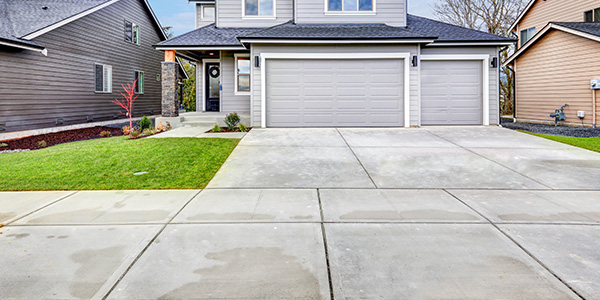
3. Clean Up Your Driveway and Sidewalk
Snow, ice and salt can take a toll on concrete and asphalt surfaces. Make sure your driveway, sidewalk and walkways are ready for harsher weather with these fall maintenance tasks:
- Pull weeds: If grass or weeds have popped up in the cracks of your driveway or sidewalk, pull them out before fixing and sealing the gaps.
- Repair cracks: When it snows, water can collect in existing cracks and make them worse. Use concrete caulk to patch up hairline cracks and concrete sealer to fix larger gaps.
- Seal expansion joints: Seal concrete expansion joints with polyurethane caulk to prevent water from seeping in and freezing in the colder months.
- Clean and seal the surface: Before temperatures drop below 40 degrees, pressure wash your driveway and seal it with a concrete or asphalt sealer to prevent damage from snow and salt.
If you’re seeing large or connected cracks, major signs of wear, drainage issues or your driveway is more than 20 years old, it may be time to replace the driveway.
4. Inspect Your Fireplace
If you have a fireplace, make sure clearing out the chimney is on your home maintenance checklist this fall. “If your chimney has not been inspected or cleaned this past year, the very best time to do so is now, before the heating season,” says Marshall Peters, director of the Certified Chimney Professionals.
Fireplaces produce deposits which are combustible and can burn at over 2,000 degrees Fahrenheit, according to Peters. This is hot enough to destroy the chimney liner and even set your home on fire. Find a chimney professional near you to have your fireplace inspected and cleared for safety this year.

How Often Should a Chimney be Cleaned?
“The typical fireplace for most families will require cleaning every two to three years. Whether the chimney vents gas, oil, coal, pellets, corn, wood or other fuel, they all need inspecting annually and cleaned when necessary. The corrosive byproducts of each fuel type will dictate the types of problems they will cause in a chimney and which type of maintenance will be necessary. The National Fire Protection Association requires annual inspections for all solid fuel chimneys for this reason."
Marshall Peters | Certified Chimney Professionals
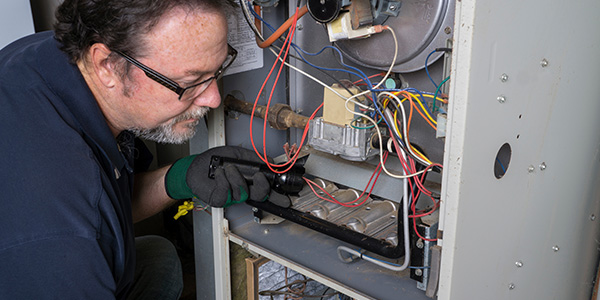
5. Test Your HVAC Systems
Don’t get caught in the cold with a broken furnace. Add an HVAC check to your fall home checklist. Here are a few maintenance tips from Bob Burkholder, owner and president of Burkholder’s Heating and Air Conditioning.
Fall HVAC Maintenance Tips
- Check air filters: Replace your air conditioning filter before shutting it down, and stay on top of furnace filter changes throughout the heating months to keep your system working properly.
- Clean up your outdoor unit: If you have an outdoor unit, double-check for any damage. Remove all debris from around the unit to ensure proper air flow and prevent dirt or leaves from getting on the coils or inside the unit.
- Schedule a tune-up: he number one thing a homeowner should do to make sure their HVAC system is ready for winter is to schedule a tune-up with a licensed heating and air conditioning contractor. During a tune-up, most HVAC contractors inspect, clean and test all safety controls so you know the equipment is operating correctly and safely.
Is your HVAC system outdated? Learn when to replace your heating systems and get ahead of potential issues before winter. Older furnaces can be up to 50% less powerful than newer models, so if you’re shopping for a replacement, look for energy-efficient systems with the Energy-Star label.

Pro Tip: Feeling cold? Turn up the humidity, not the heat.
“Lack of moisture in a home can cause the room to seem colder than it actually is, causing you to crank up the thermostat. In reality, it is the humidity level that needs to be adjusted. Dry air is not able to hold in as much heat, so it tends to feel colder. The humidity level in a home is as low as 20 percent in winter. On average, it should be closer to 35 percent. Portable humidifiers work well in small areas. There are also whole-home humidifiers that can be installed as part of your home’s heating and cooling system.”
Bob Burkholder | Burkholder’s Heating and Air Conditioning
6. Cut and Aerate Your Lawn
Clean up your yard now to ensure it bounces back come springtime. Your final fall yard maintenance tasks should include:
- One final mow: Cut the grass one last time for the year, bringing it down to about two inches.
- Aerating: Aerating the lawn helps micronutrients get into the soil and feed the lawn before the colder months.
- Putting down a pre-emergent: Using a good pre-emergent will prevent weeds from germinating and “stealing” nutrition from the soil over the winter.
- Applying fertilizer: Lay down a layer of fall fertilizer two to three weeks prior to the first frost.
While tidying up the yard, keep an eye out for slopes, impacted soil and runoff erosion to prevent yard drainage issues in the colder months.
7. Tackle Fall Garden Maintenance Tasks
Winter is also a trying time for your trees, shrubs and flowers. Protect your landscaping from the elements with these fall maintenance tips:
- Water generously: Deeply water your plants before they go dormant. The best time for a final watering of your trees and shrubs is after the leaves have fallen and before the ground has frozen. Do not water them when it’s colder than 40 degrees outside.
- Mulch the roots: Add a thick layer of mulch to the base of your trees, shrubs and bushes to keep their roots warm and shielded from snow and ice. Traditional mulch is preferred, but you can also use dead leaves from your yard to create a barrier.
- Ward off pests: When it’s cold and food is scarce, deer, mice and rabbits will see your garden as an open buffet. Grazing can be extra harmful to your plants in the winter, so make sure to have pest prevention measures in place this fall.
- Shield from wind and snow: Dense shrubs and trees can be damaged by high winds and heavy snowfall. Wrap them in shrub covers or chicken wire to provide structure and protect them until spring.
- Protect newer plants: Give extra TLC to flowers, bushes and trees you’ve planted this year. These will be the most vulnerable to harsh weather.
- Divide perennials: Perennial plants like lemon grass and fountain grass need to be dug out and divided before winter to ensure they are healthy and grow in the spring.
- Clean up debris: The last important fall garden maintenance task is to get rid of yard waste like dead branches, weeds and invasive plants. This will help prevent pests from building winter nests in your yard.
Find more tasks and tips in this fall yard maintenance checklist.
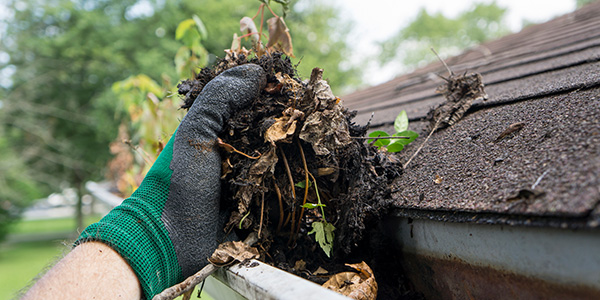
8. Check Your Gutters and Downspouts
You likely don’t give your gutters much thought, but they play a huge role in protecting your home’s foundation and preventing floods. While working on fall home improvements, clean out the gutters to prevent ice dams in the coming months.
Remove any leaves, twigs or other debris that can prevent proper drainage. Then, flush the gutters with water and inspect the joints. Tighten the brackets if necessary. For a more permanent solution, you may consider installing a gutter guard. It’s an easy DIY project and will keep you off a ladder for this task in the coming years.
If you notice leaks, cracks or water pooling around the edge of your house, it’s important to repair your gutters now before bigger issues arise.
9. Clean Your Space Heaters
Before putting your heating devices back into commission, it’s important to make sure they’re clean and in working condition. “Heating is the second-leading cause of US home fires and the leading cause of home fire deaths,” says Susan McKelvey of the National Fire Protection Association. “On average each year, nearly half of all home heating fires occur in December, January and February.” Before you hit the on switch this season, here are a few portable heating safety tips to add to your fall home maintenance checklist:
- Clean the grates: While the heater is off and cooled down, use a microfiber cloth or damp sponge to wipe off the surface. You can also use compressed air to loosen dirt and dust inside the unit.
- Inspect the cord: If you have electrical experience, you may be able to replace a frayed cord with an appliance cord. If not, you can contact a local HVAC technician to see if they offer space heater repair services. Otherwise, it’s better to be safe than sorry – when a cord is damaged, throw the unit away and purchase a new one.
- Have proper ventilation: If you have a combustion space heater, be aware that these are not intended for use inside the home and will require proper ventilation if they’re used to heat a garage.
10. Check Your Smoke Detectors
As we mentioned, house fires are most common during the colder months, and smoke alarms will be your first line of defense. “Three out of five home fire deaths occur in homes with no smoke alarms or no working smoke alarms,” shares McKelvey. Inspect your smoke detectors thoroughly to keep your family safe this fall and winter.
NFPA Guidelines for Maintaining Smoke Detectors
- Install at least one smoke alarm on every level of your home, in all bedrooms and near all sleeping areas.
- Test smoke alarms monthly.
- Replace smoke alarm batteries any time they chirp.
- Swap out smoke alarms after 10 years. The manufacture date is marked on the back of the alarm.
- Opt for interconnected smoke alarms for full-home protection.

Do you have a fire escape plan? Fall is the time to make one.
"When the smoke alarm sounds, you may have as little as two to three minutes to escape safely. You need to know how to use that time wisely. A home escape plan includes:
- Everyone in the household knowing two ways out of every room.
- A path from each of those exits to the outside.
- A place out front of the home where everyone will meet upon exiting."
Susan McKelvey | National Fire Protection Association
11. Check Carbon Monoxide Detectors
While you’re checking smoke detectors, inspect your carbon monoxide detectors as well. Carbon monoxide detection is important year-round, but especially in the colder months. According to the CDC, most accidental carbon monoxide poisonings occur in January, followed by December, because furnaces and space heaters can emit this toxic gas. Replace the batteries to ensure your family will be safe this fall and winter.
12. Tidy Up Inside
Although spring is the most common time to freshen up the house, fall cleaning is equally as important. Reduce allergens while you’re cooped up inside all winter by doing a thorough dusting and vacuuming, and cleaning your baseboards. You should also clean your windows one more time before temperatures drop. Wash the windows on a cloudy day to prevent streaks, and wipe them down with a microfiber cloth.
While swapping out your summer clothes for sweaters, this is also a great time to vacuum, declutter clothes you didn’t wear this year and reorganize your closet.
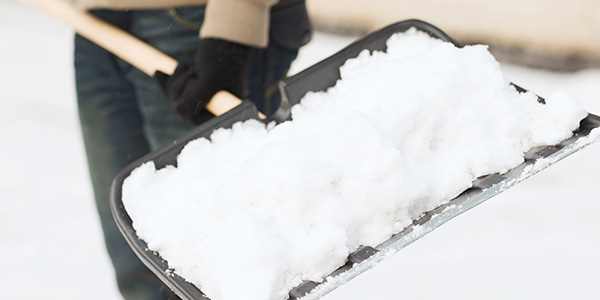
13. Stock Up on Cold Weather Supplies
The worst time to realize you’re out of sidewalk salt or have a broken shovel is in the middle of a blizzard. Before the first snowfall, take stock of your snow removal tools and other supplies. Here are a few final inventory tasks to cross off your fall checklist:
- Check your tire chains for rust and broken links.
- Swap in your snow tires once temperatures are consistently below 45 degrees.
- If your riding lawn mower has a snow shovel hookup, install it right after your final cut.
- Fuel up and test all snow removal equipment.
- Stock up on sidewalk salt, firewood and windshield wiper fluid.

Pro Tip for Getting Firewood
“It is very important that the wood has seasoned, or dried, for a year or two before it is used for heating. Much of the energy created by burning non-seasoned wood is used in burning off the water content in the wood which produces steam and lowers the flue gas temperature. This can create more creosote and glazed creosote, which increases the risk of a flue fire.”
Marshall Peters | Certified Chimney Professionals


